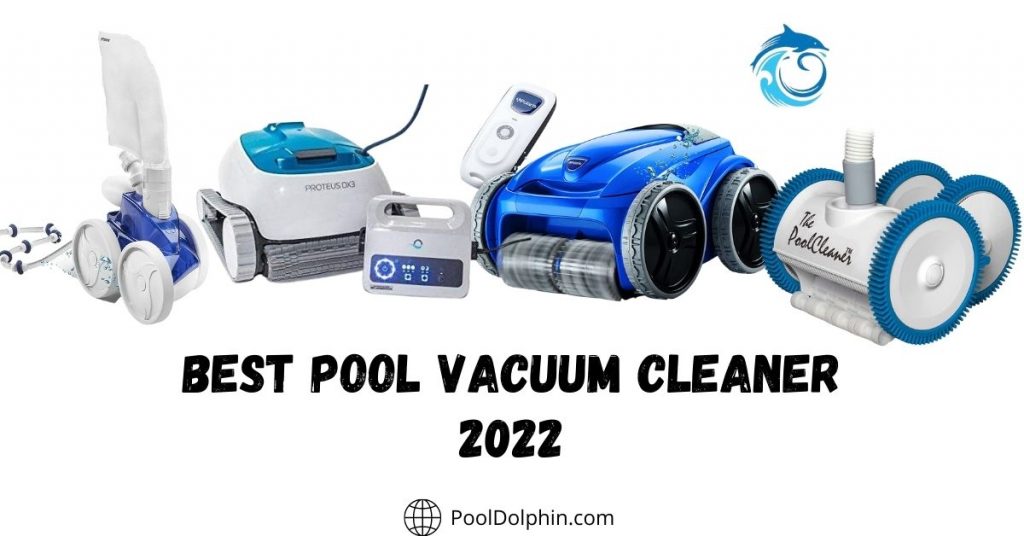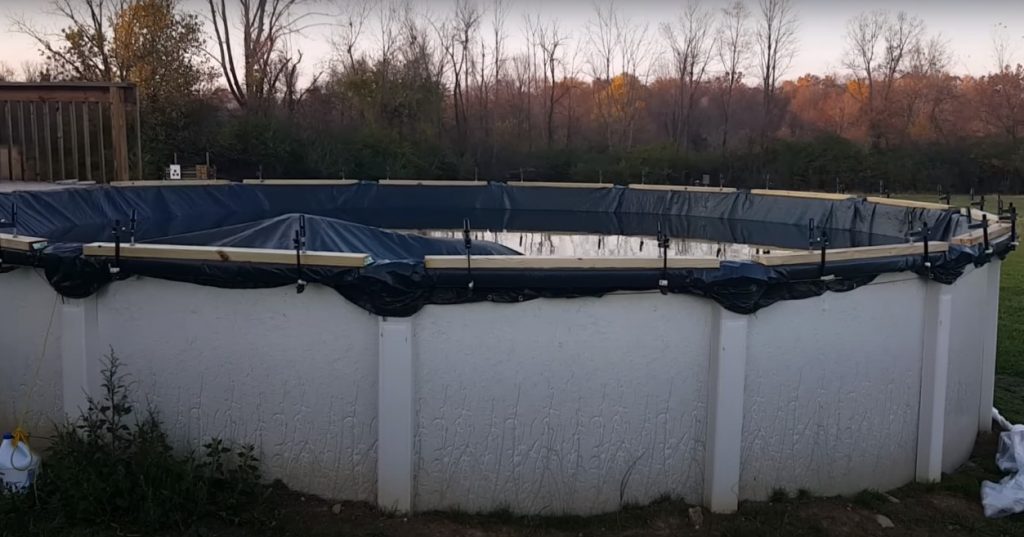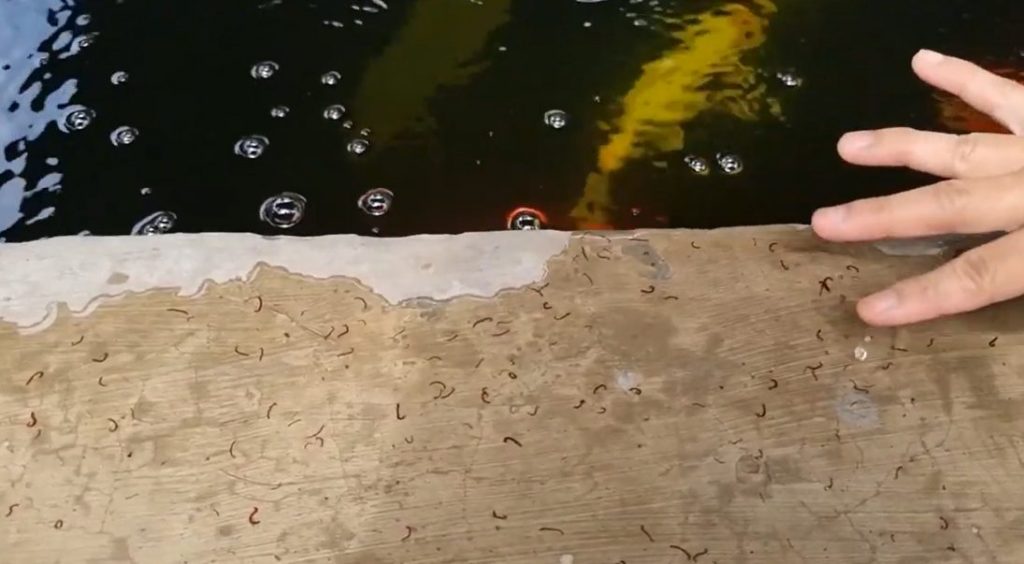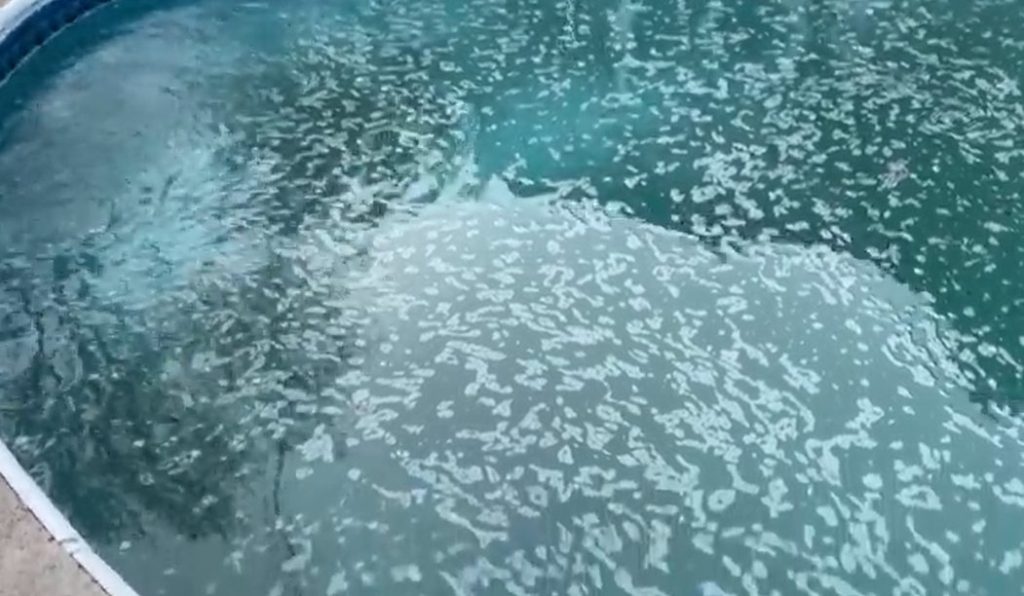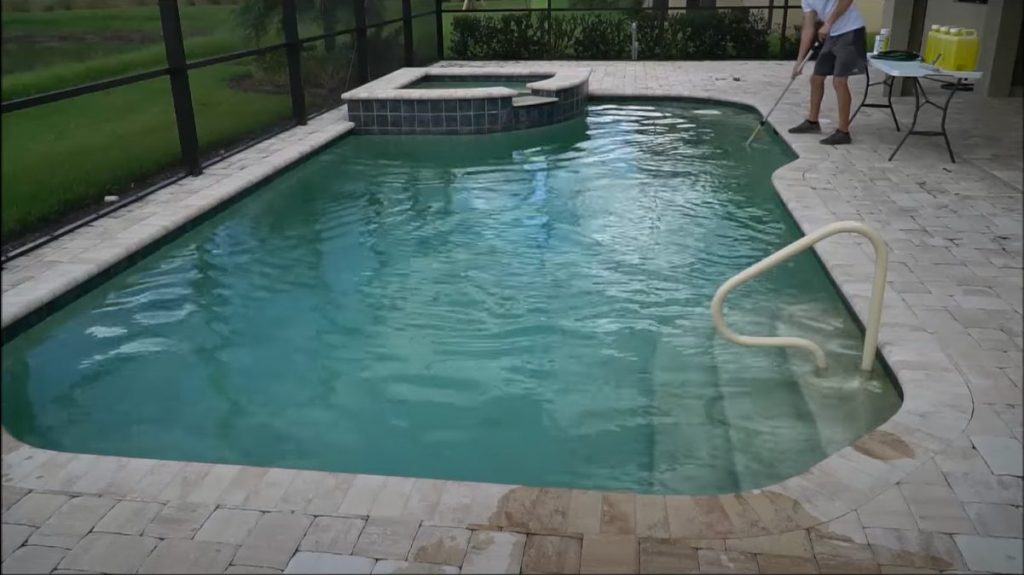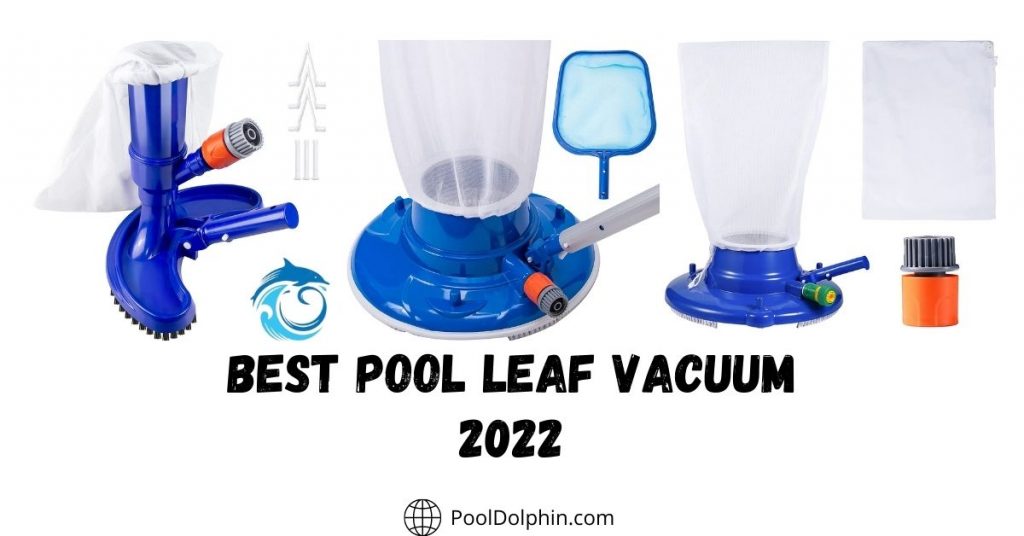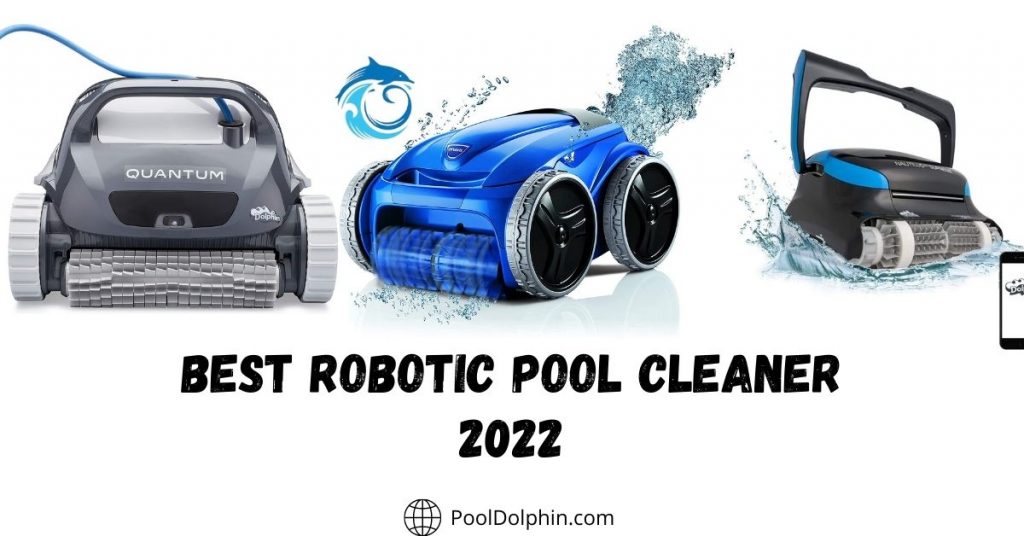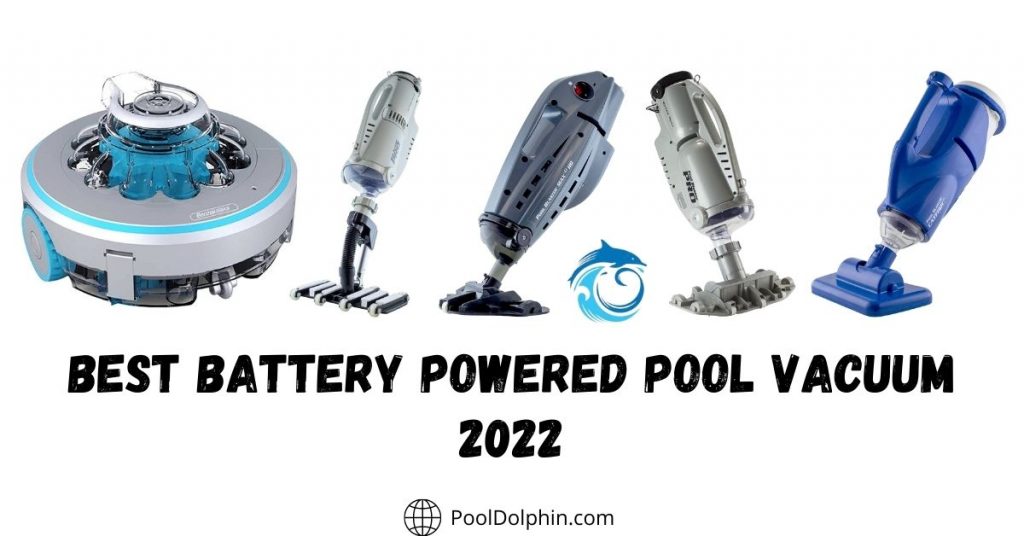Don’t worry if you notice algae has turned your salt water pool green. Killing and preventing the development of algae in your salt water pool isn’t as daunting as it may seem. Just act aggressively and take action.
Don’t let algae take over your pond. By taking some preventative steps and being proactive, you can stop an algae in pool bloom in its tracks. Elbow grease, a little bit of know-how, and the right supplies are all you need to get rid of pool algae for good.
What Turned Your Salt Water Pool Green?
It’s hot outside, and you want to take a dip in your pool water to cool off. You walk outside and notice that your once-crystal-clear pool is now murky and gross. You can’t even see the bottom.
It looks like a swamp monster might come crawling out at any minute. What the heck happened? How did all this muck get into your pool?
Algae can come from some surprising places—like you and your family. Swimmers can carry algae spores in their bathing suits from other places they went swimming.
It may also stick to pool floats, swim vests, even your pool cleaning equipment. Have you ever felt little slimy patches on your floats? That could be the start of your next algae bloom.
Why Is Your salt water pool cloudy Green?
The good thing here is that if your pool is green, you likely don’t have to diagnose the problem—at least, not immediately. Green water usually has one culprit, and that’s algae.
Algae can be introduced into any pool, no matter what sanitizer it uses. That’s because no sanitizer type can prevent or attack algae on its own.
Whether you have a chlorinated pool, a saltwater pool, or a biguanide pool, an algae infestation is always a possibility, and you may want a backstock of shock for salt water pool just in case it happens to you.

Although it’s always a good idea to thoroughly wash any swimsuits, pool toys, or equipment that has come in contact to prevent algae in salt water pool, this green giant can also simply enter your pool through spores in the rain.
In other words, even if you have a perfectly chemically balanced pool, you’re not immune from algae of the pool.
Even though anyone can get algae in their pool, some conditions make it more likely. An imbalanced chemical levels or warmer pool waters creates the perfect environment for algae to grow.
If you find yourself in this situation, don’t worry. There are plenty of things you can do to get rid of algae and keep it from coming back.
What Causes Algae in a Salt Water Pool?
In order for algae to contaminate your saltwater pool, two things need to happen simultaneously:
- Your pool becomes chemically imbalanced.
- Algae spores enter your pool.
In order to prevent algae infestation in your pool, it is important to keep the water balanced. Industry experts have found that it is much easier to maintain balanced water than to try and keep algae spores out.
Types of Algae That Can conquer a Salt Water Pool
Algae spores can enter your pool in many ways, for example:
- You might bring them in on your clothing or pool toys.
- They can blow in with the wind.
- Rain can wash them into the pool.
- Sunlight can break down chlorine, leading to algae growth.
- Warm temperatures can make algae grow faster.
Several different types of algae can set up shop in your pool.
Green Algae
Algae, specifically green algae, are one of the most common contaminants found in pools. Green algae are able to grow very quickly due to their ability to photosynthesize and generate energy from sunlight.
This is why algae blooms are more likely to occur on sunny days when there is an abundance of sunlight available for the algae to feed off of.
Green algae can be a pain to deal with, especially because of how quickly it seems to take over surfaces. The good news is that green algae is also the easiest type of algae to remove.
In order to clear your pool of green algae, you will likely need to best shock for salt water pool it twice.
Yellow Algae
If you see debris that looks like pollen or clumpy sand gathered in the corners and on the floor of your pool, it’s likely you have yellow algae. This type of algae is commonly called mustard algae, but it’s definitely not something you want to put on a hot dog.
Black Algae
This black cyanobacteria may look harmless at first, but it can actually be quite damaging to your pool. It grows its roots deep into surfaces, making it very difficult to remove with chlorine.
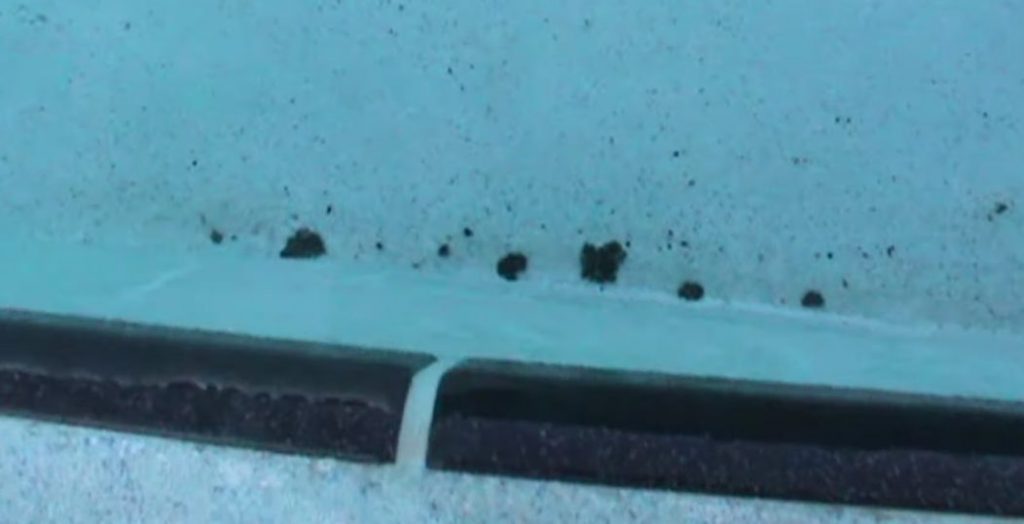
Pink Slime
Pink slime is a type of bacteria, though some people might mistake it for algae. Just like with algae, pink slime is a common problem that can occur in pools. You might be able to spot pink slime by its sludgy or mucousy streaks.
It’s important to note that pink slime is not sanitary and you should avoid swimming in the pool until the contamination has been taken care of.
In some cases, pink slime can be just as stubborn as black algae. You might need to shock your pool three or four times to eliminate the bacteria completely.
Salt Water Chlorination
If you’re new to salt water pools, you might not know that the water is actually chlorinated. In fact, ideally, it has the same amount of free chlorine as any regular pool. The difference lies in how the sanitizer is administered to your pool water.
A salt water system is an alternative to using chlorine in your pool. You add salt to the pool instead. The salt chlorine generator uses electrolysis to turn the salt into hypochlorous acid (HClO) and sodium hypochlorite (NaClO), which is also known as chlorine.
The electrolysis process in a salt water chlorinator zaps salt water to create chlorine. This happens gradually and constantly, rather than all at once like other chlorinators. This provides a softer chlorine that is gentle on swimmers’ skin, hair, and eyes.

Super Chlorination
When your pool experiences a heavy bather load or things outside your control, such as heavy rain, you can use your chlorine generator’s super chlorination mode to immediately raise the free chlorine concentration in your pool water.
You can also use this function during weekly super chlorinating, just as you would add shock to a regular chlorine pool. The downside is that the shock level on your chlorine generator is not designed to attack an already existing algae problem.
How To Fix A Green Salt Water Pool
If you have an algae problem, you’ll need to solve it the traditional way.
1. Clean The Filter
Cleaning dirty water with a dirty or non-working filter or filtration system will never work. Our first step is to make sure our filter is clean and in perfect working order. Backwash your sand or DE filter.
If you have a cartridge filter, make sure you take it out and spray it off with a garden hose and sprayer. If your cartridge has over 3000 filter hours on it, you’ll need to replace it and get a new one.
2. Test and Balance Your Pool Water
The pH, alkalinity, and hardness of your pool water should be in line with each other. Adjust your pH to 7.0-7.2. Chlorine is more effective at a slightly lower pH level. Adjust your alkalinity to 80-120 ppm and hardness to 150-250 ppm.
Remember to maintain your CYA level at 30 – 50 ppm. I use and recommend the Taylor K-2006 pool test kit for this purpose.
3. Brush The Pool With A Brush
Algae loves to stick to your pool’s surface, so give it a good brushing at least twice a day. If you have a plaster or concrete pool, go ahead and use a wire brush. When it comes to vinyl or fiberglass pools, though, never use a wire brush.
4. Shock Your Pool
You should maintain a free chlorine level of at least 20 ppm in your pool using liquid pool chlorine or bleach. Your chlorine level will always decrease over time, so it is important to check it regularly and keep it at a high level.
Make sure your chlorine generator is turned OFF while you are doing this.

5. Keep Pump Motor On and Filtering
Keep the pump motor on until the entire process is finished to ensure all dead algae particles are removed from the pool water. By doing this, they will be trapped in the filter waiting to be cleaned or backwashed out.
6. Shock Your Pool Again
Shocking a pool is a lot like taking care of a pet. It’s not something that you can just do once and then forget about it. You have to be vigilant and constantly monitor the chlorine levels to make sure that the algae are kept at bay.
7. Clean The Filter
The first time you backwashed or cleaned the filter, it was to clear up your pool. Now your filter has captured a lot of the dead and dying green algae, and that needs to go somewhere.
Backwashing your sand or DE filter, or cleaning your cartridge filter again will help get rid of it.
8. Test and Balance Pool Water
Now that you’ve taken care of your green algae problem, it’s time to turn your attention to balancing your pool water and also preventing the dangers of salt water pools.
Your chlorine levels might be a bit high right now, but give it some time and they will naturally start to decrease. As for your pH levels, they might be above the normal range at the moment, but you can easily fix that by adding a little muriatic or dry acid to the mix.

9. Keep an Eye Out
For the next few weeks, watch for reoccurring algae. Maintain a chlorine level of 2 – 4 ppm. At the end of the clearing process, add a maintenance dose of clarifier to help clump smaller particles together for easier filtering.
FAQ For Salt Water Pool
1- Why does my saltwater pool look green?
When your salt pool goes green, it is because there is an increase in the “chlorine demand”. “Chlorine demand” is the amount of chlorine needed to burn up all the organic material in the water and leave a chlorine residual. When there is a high chlorine demand, it means that there is a lot of organic material in the water that needs to be burned up.
2- How do you clear up a saltwater pool?
To lower pH, add either muriatic acid or sodium disulfide to the water. If you want to raise pH, add baking soda (sodium bicarbonate) or soda ash (sodium carbonate). Always check the total alkalinity of the pool water before raising pH. If it’s close to the ideal range of 80 to 120 ppm, use soda ash.
3- Should you shock a salt pool?
Although it may seem counterintuitive, shocking your saltwater pool is an important and necessary part of keeping it clean and safe for swimming. When you shock your pool, you are actually helping to change the salt in the salt cell into chlorine. This, in turn, helps to keep your pool water clean and free of harmful bacteria.
4- How long does it take a salt water pool to clear up?
Most people don’t realize this, but it takes quite a while to filter an entire pool’s worth of water. In most cases, it takes at least 6-8 hours to do a full turnover. To prevent your saltwater pool from getting cloudy, you should run the filter for 8+ hours per day. If you don’t run the pool filters for long enough, you won’t get full filtration because not all the pool water will be filtered.


